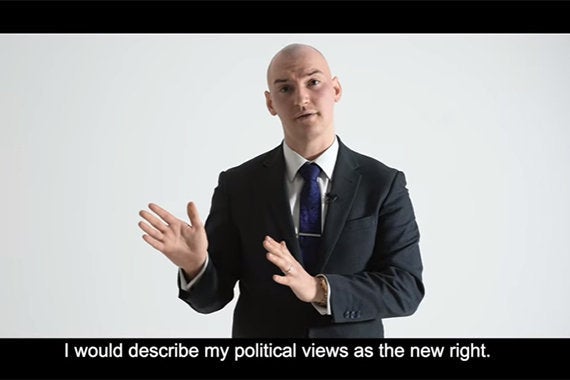“It’s one of the strangest productions I’ve ever done. The atmosphere on set was bizarre.” So says Toby Dye, director of Heineken’s striking new World’s Apart advert, which forms part of the company’s #OpenYourWorld campaign.
The premise was simple. A social experiment which brings together two individuals whose worldviews are in such conflict there’s no way they should be able to connect and every likelihood they will not get on. Could they begin a dialogue and actually find some common ground? “I loved the idea,” says Toby, “but the biggest concern from my point of view was whether we could actually make it work.”
Toby Dye is an experienced documentary filmmaker whose previous works include ‘Bodysnatchers of New York’ for Channel 4, as well as powerful commercials such as ‘Free The Kids’ for Persil. It’s his background in “old school” documentary making that gives his four and half minute ‘World’s Apart’ film such a distinctive quality.
“My thing is single one hour documentaries telling interesting stories. You could have taken this subject matter and approached it in a very tacky way, but I wanted it to be made with the rigour and protocols of a proper documentary. The only way this would have any validity was if it was done with some integrity and authenticity, so that was crucial for us throughout.”

For Toby and his production team, the initial headache was casting. If this was to be an effective social experiment, those taking part could only be told a limited amount about what was going to happen. “They’d be told it was a documentary project that involved an element of a social experiment and that it was for an advertisement. That’s all we could tell them initially.” Rebecca Mills, the film’s casting producer, spread a net far and wide looking for people with opposing views on such things as climate change, gender and politics. These people were then brought in for interviews.
“The really tricky thing,” says Toby, “is we were interested in specific beliefs and values they had, but we couldn’t just talk about that subject in the interview because they’d figure out the reason they were there, so we had to play this very elaborate game where we’d interview them on lots of things that were actually irrelevant, just to cover our tracks.”
This meant the casting process took two months, a very long period for this kind of film. Although the initial concept was to take two people with opposing views, Toby and his team soon saw that it would have a more powerful impact if there were a number of pairings. They filmed nine in total, and the final film features three of them. “When you’re filming someone it is going to affect their behaviour, but we wanted to keep the experience as natural as possible, so they never saw any crew in the room, the cameras were either unmanned or were hidden behind mirrored glass, and this is one of the reasons they are so unguarded and relaxed and quite intimate with each other.”
The pairings start out by having to do a series of physical tasks, which ultimately see them building stools and then a bar. This aspect of the film was designed to create a bonding experience and was done with the help of experts in conflict resolution at ETH Zurich. “They involve tasks that enable two people to experience the same state,” explains Toby. “So when they build the bar for example, they have to co-operate, and by the end of it they’re both tired and this changed, physical state helps promote empathy.”

But then came the moment of truth. After building the bar together and knowing little about each other’s backgrounds, the participants then sit and watch a film each of them has made earlier expressing their beliefs. They then have a choice to have a drink at the bar and discuss their differences, or leave. “It was tense, a real heart-in-your-mouth moment,” says Toby. “We genuinely thought there was a high chance it was going to crash and burn, that we’d have people getting into fights, or that they’d just walk out and none of it was going to work.”
But to everyone’s surprise, something else happened instead. The people sat down again and talked. They even started to listen to each other and began to revise and reassess their own opinions and beliefs. Toby was astounded. “I have to admit, without wanting to sound too pompous, the whole experience did boost my faith in humanity. I came away massively more optimistic.”
The whole social experiment proved to be so successful that at least one of the pairings has stayed in touch, despite only meeting each other for a few hours. Toby sees the results of the film as proof of something else, too – the hysterical atmosphere found on social media. “There’s a lot to be said for the argument that the reason current political discourse is so polarised is because no one’s sitting down in a room and engaging with anyone, they’re just shouting at their laptops at 3am in the morning.”
Heineken’s #OpenYourWorld campaign also includes a collaboration with The Human Library, an organization designed to break down barriers and show that what divides people is mostly the product of ignorance and misunderstanding. As for Toby Dye, he remains buoyed up by the experience. “I really didn’t think it was going to be like that,” he says. “I think everyone involved got a lot from it. I found it to be a very healthy process.”